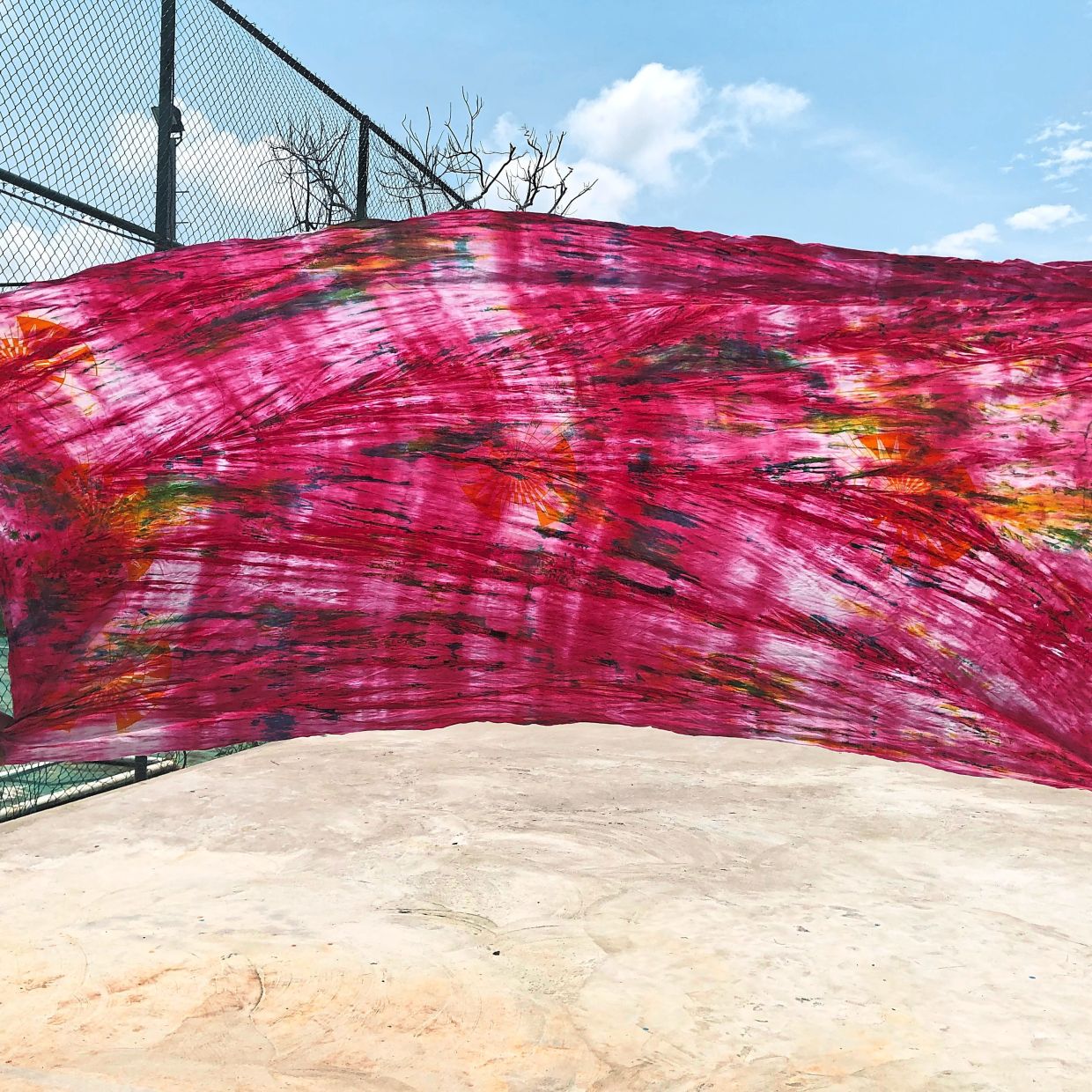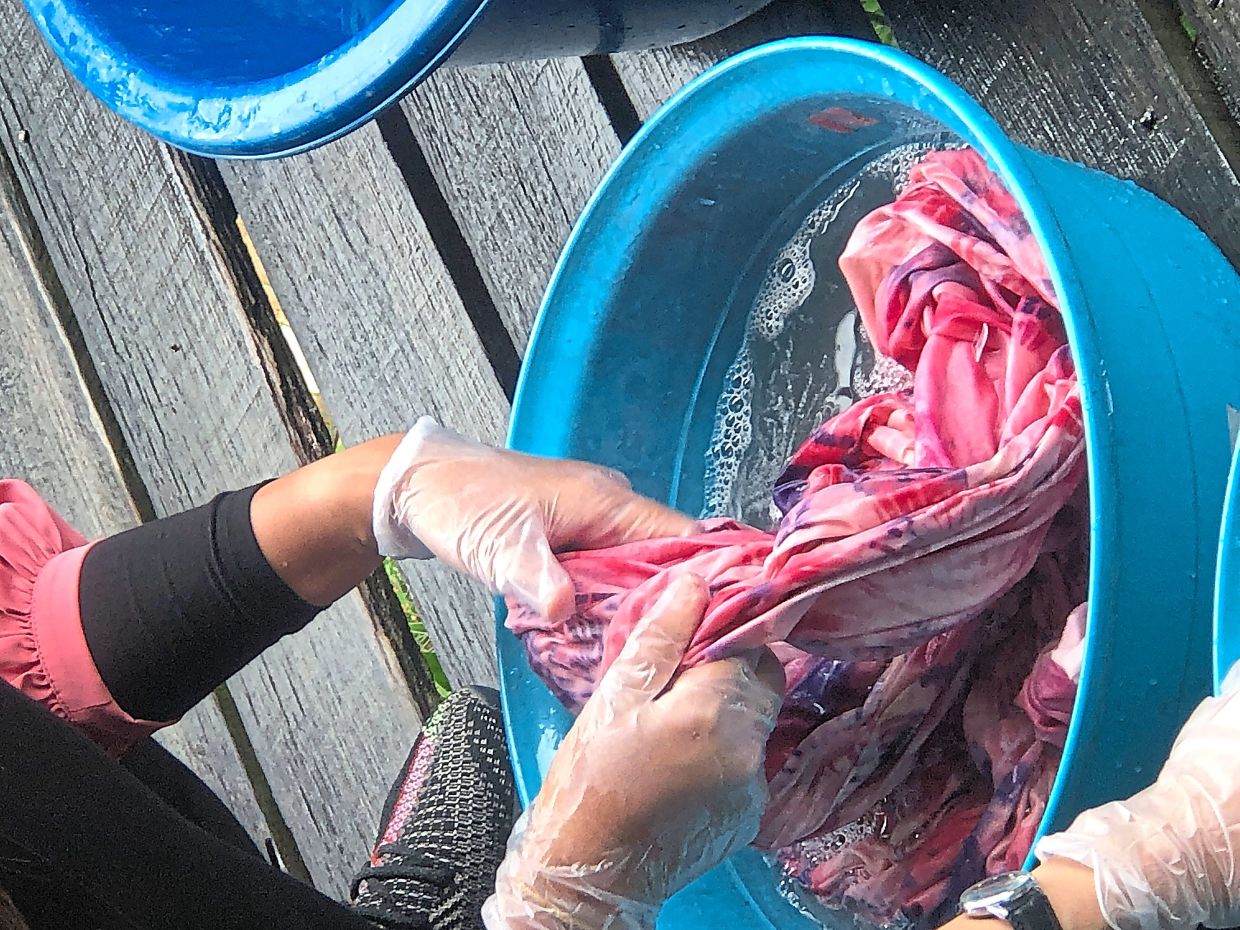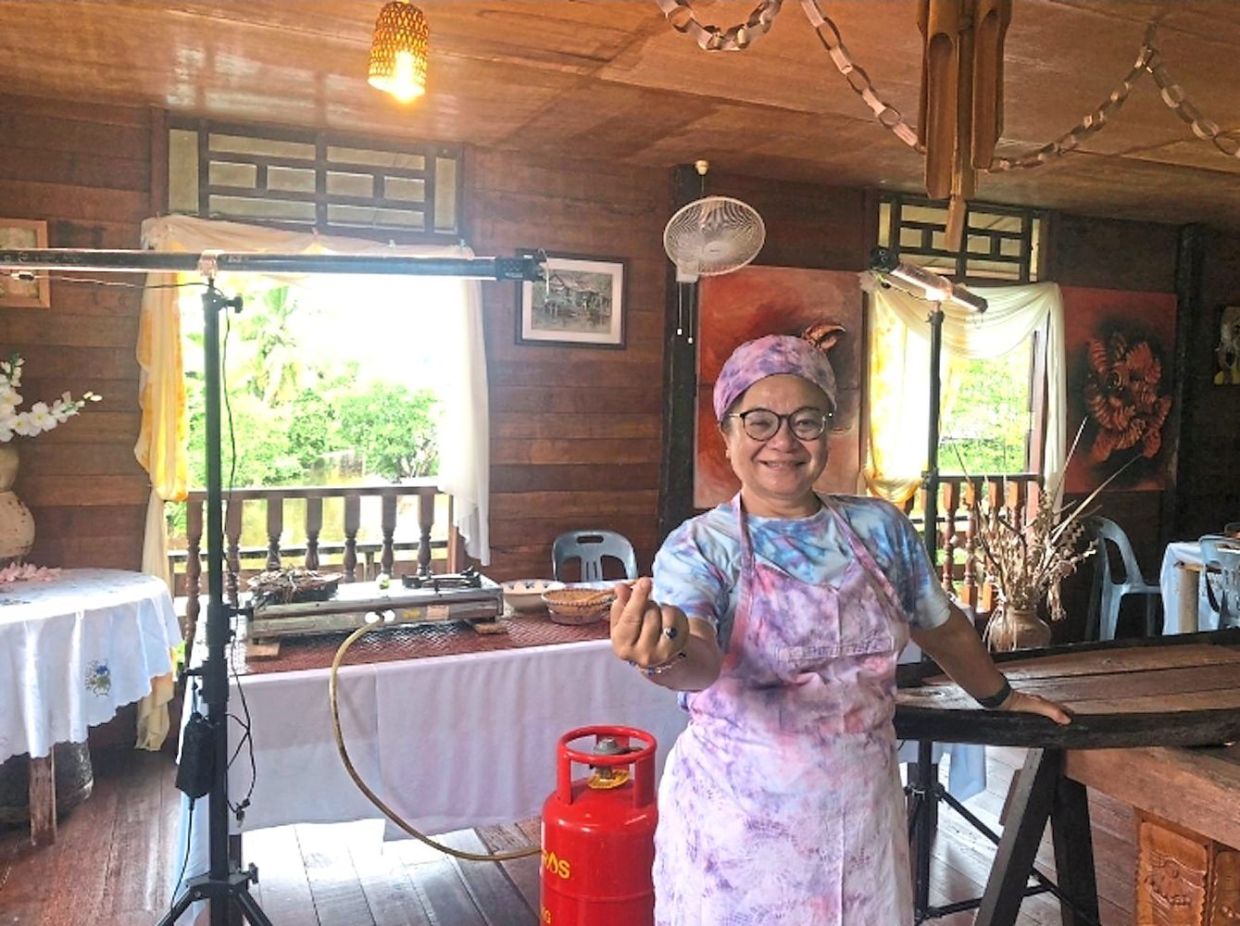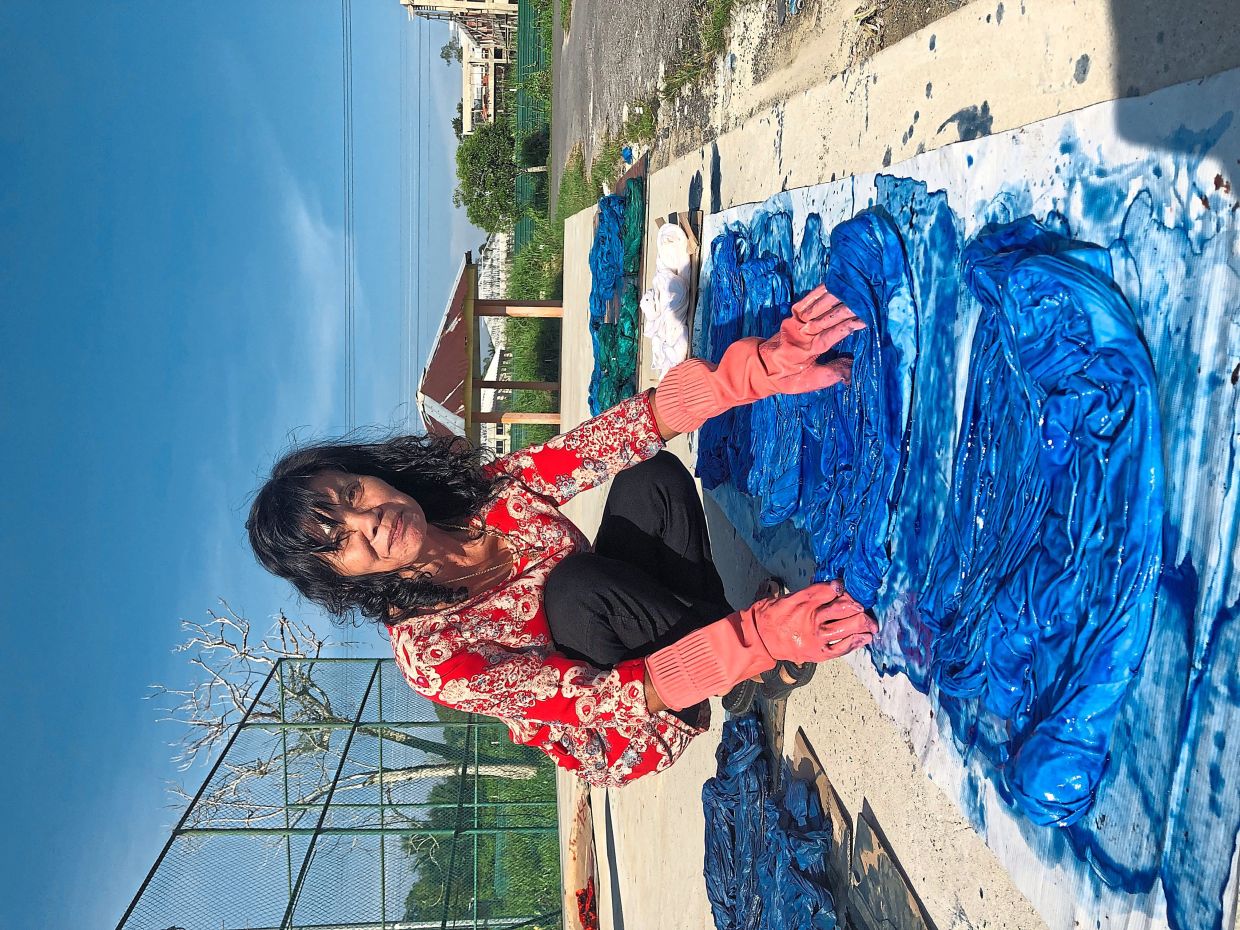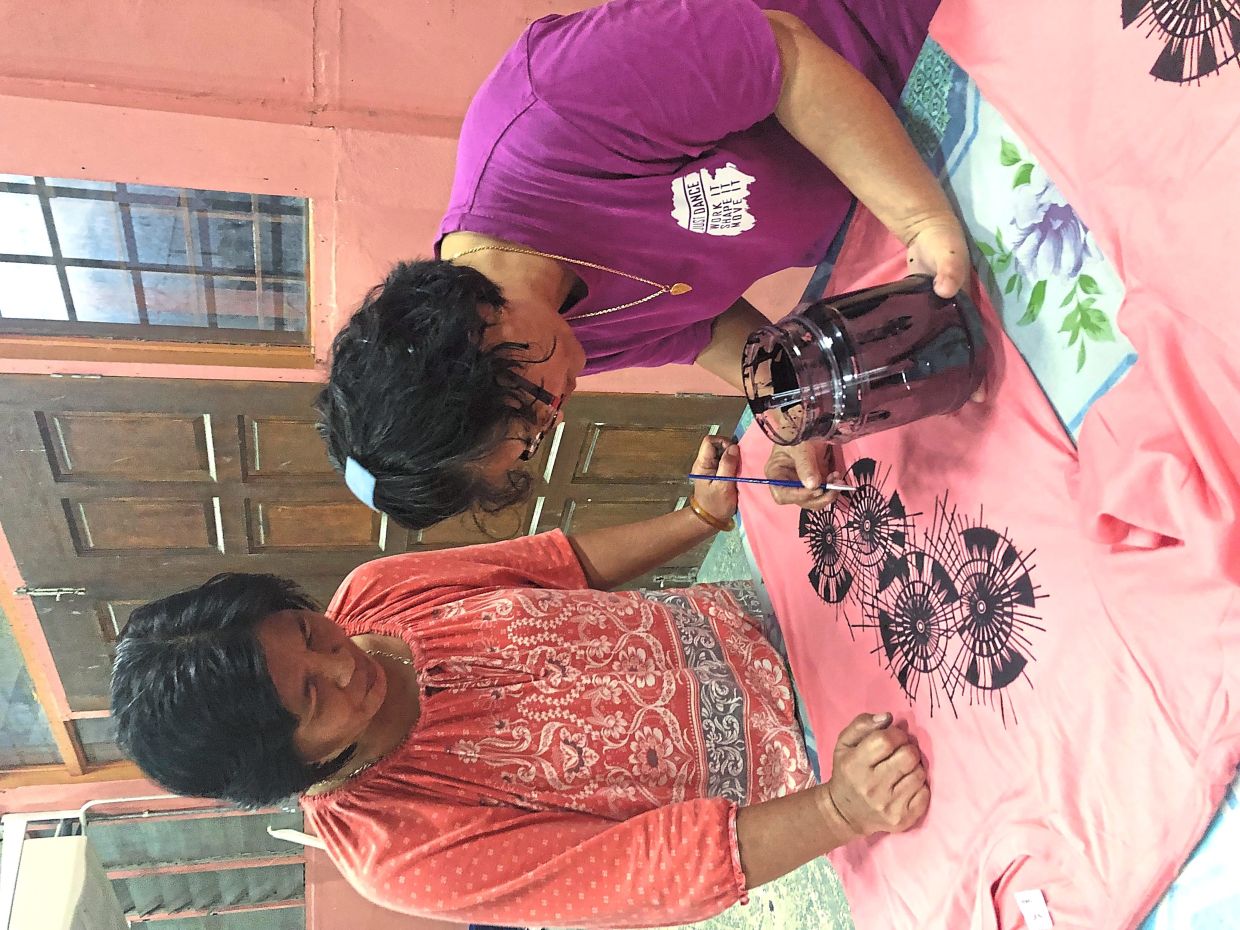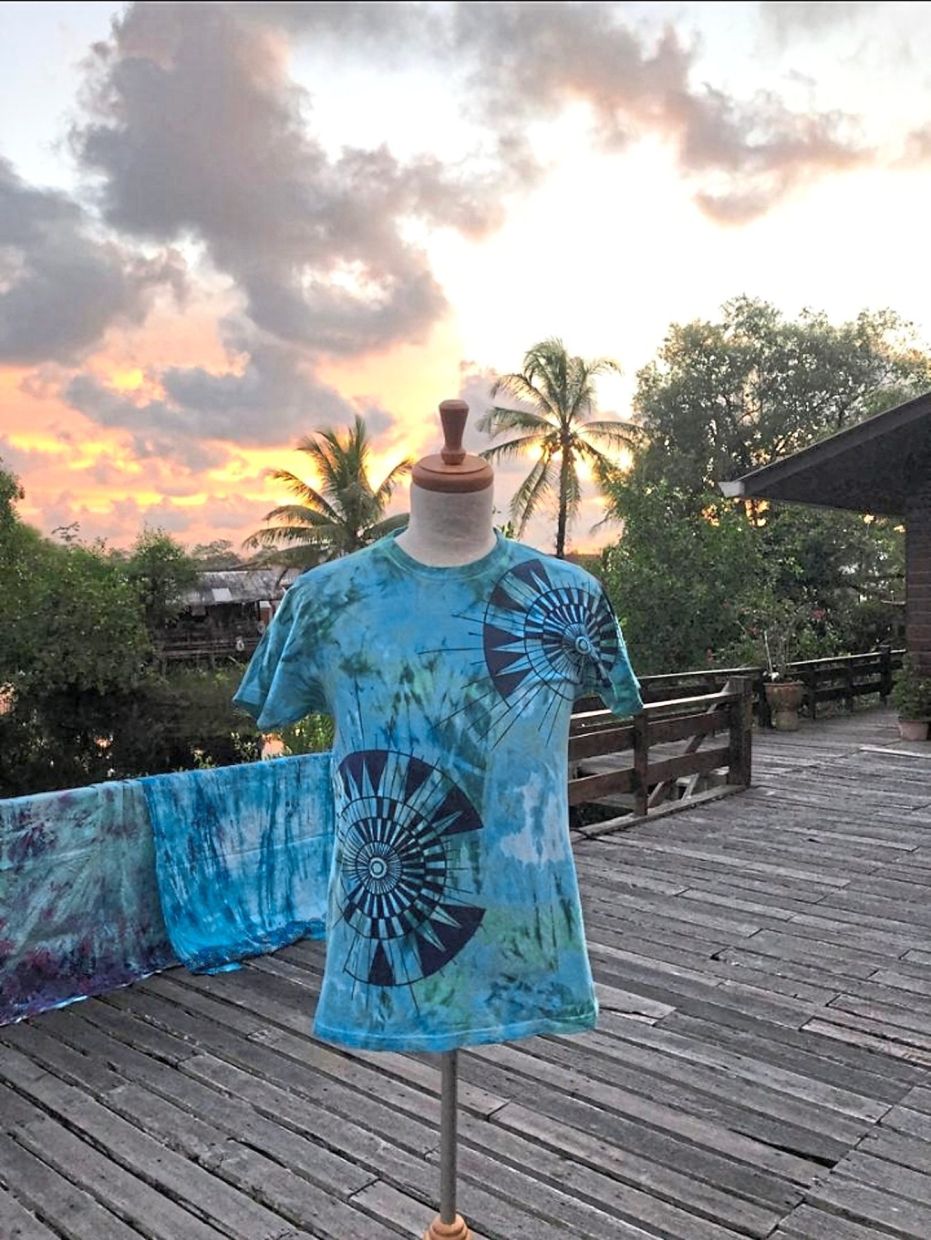Batik linut isn't just a Melanau tradition, it's Sarawak's first batik. Photos: Diana Rose
Mention linut, and most Sabahans and Sarawakians will know it as a starchy substance that’s typically enjoyed with sambal or other dishes. But in the last few years, linut, made from sago flour mixed with hot water, has gained popularity as a resist in batik-making.
Five years ago, Mukah-based businesswoman Diana Rose discovered an innovative method where linut is utilised as the resist medium, instead of candle wax.
"The idea was mooted in 2019 when Malaysian Handicraft Development Corporation (Kraftangan Malaysia Sarawak) director Azran Arip proposed to start a new batik community in Sarawak and I enthusiastically took up the challenge.
"Initially, the idea was to use tapioca starch as the resist medium, but it didn’t ignite my passion. Instead, I decided to focus on linut, a dish made from sago flour derived from the sago palm. This crop is a vital staple in Sarawak and holds a deep connection to our cultural roots. Linut serves as a great resist in textile design. That was how batik linut was born," says Diana, 59, during a Zoom interview from Mukah, a coastal town in central Sarawak, recently.
Linut, along with techniques like clay and ecoprints, offers an alternative to traditional batik production methods that do not involve the use of candle wax.
Diana is proud that she has pioneered this new method, leveraging Sarawak's status as a major sago producer. According to her, it is a way to preserve and promote Sarawak's diverse heritage.
"Linut provides a high-quality binding, becoming sticky like wax when it dries, which prevents any colour from penetrating.
"Another advantage of linut is that it's a food product, making it biodegradable and more environmentally friendly. We are experimenting with natural dyes like turmeric, indigo and dragon fruit to make our batik linut fully organic, from the sago base to the colouring," she explains.
Fresh take on batik
A former news journalist with The Star, Diana takes great pride in her Melanau heritage and is committed to preserving it for future generations. By promoting batik linut with traditional Sarawakian designs, she wants to showcase Malaysia’s rich cultural heritage to the world.
Diana has worked in The Star's head office in Petaling Jaya, Selangor and bureau offices in Kuching and Miri, Sarawak. She left her writing career in 2010, after nearly two decades, to care for her ageing mother and run a cultural homestay, Lamin Dana Cultural Lodge, in Mukah.
"Our batik designs highlight Sarawakian and Melanau culture, incorporating elements like Orang Ulu fern curls, bunga melor and other traditional motifs. We use sago-related fruits, palm leaves, Melanau headgear and terendak (the conical hat shape of the Melanau community) designs, while also integrating Iban patterns to create a truly Sarawakian tapestry.
"Batik linut isn't just a Melanau tradition; it's Sarawak's first batik. While we have rich traditions in weaving and songket, batik linut is a fresh addition," says Diana, who has worked with the late Sarawak designer Abdul Latif Mohti to come up with attractive motifs for their linut batik fabrics, and ready-to-wear apparel for men and women.
Diana chalked up one of her biggest milestones when batik linut received the Malaysia Tourism Council’s gold award for batik and craft in 2022.
She operates her batik business, with the support from Kraftangan Malaysia, from Kampung Telian Tengah in Mukah because it offers a year-round abundance of sago.
The jovial woman employs eight women, including homemakers, senior citizens and widows.
"For many of them, running this business and creating batik is a new experience and offers a fresh perspective. Some staff members are particularly excited about the opportunity, as it not only provides them with a chance to earn an income but also allows them to engage in a meaningful and fulfilling activity," says Diana, who has a 16-year-old daughter.
She has also organised workshops to engage more youth in making batik linut. So far, she’s trained 30 villagers between the ages of 18 and 24.
"The response has been positive. Many see batik linut as an opportunity to earn an income while helping to preserve Sarawakian culture. Batik linut is a new concept, and many young people are eager to explore this unique form of batik.
"We've also had university graduates and interns come to Kampung Telian Tengah for training on batik linut production. For a project like this to be sustainable, I believe passion and determination are essential."
The way forward
Batik linut has been on the market since 2021 and has been featured at the 2023 Sarawak Craft Fashion Show in Kuching, as well as trade shows in Kuala Lumpur and Dubai.
It has come a long way, though Diana acknowledges that perfecting the process involved overcoming some setbacks.
The first challenge was achieving the right consistency of the sago mixture for use as a resist in batik production. If the linut is too watery or too sticky, it can negatively impact the colouring process.
Second, it was the issue of finding the right material suited for using linut as a wax resist. Not all fabrics were compatible, and it took extensive testing to determine which materials would work best with the linut resist for optimal results.
"Despite these challenges, we remained persistent and continued our experiments. It took two years of trial and error, but by the end of 2021, we successfully adapted the technique to cotton poplin, viscose, silk and chiffon.
"Because it is made using sago, you cannot get the bright colours like other batik. Most of the shades are pastel. I’d like to think that batik linut is like Sarawakians where we are happy, bright and not too loud," Diana says, laughing.
While batik linut is considered the newest addition to Malaysian batik, it has garnered a positive response since its introduction, says Diana.
Notably, it has caught the attention of the Sultan of Pahang Al-Sultan Abdullah Ri'ayatuddin Al-Mustafa Billah Shah and his wife, Tengku Ampuan Pahang Tunku Azizah Aminah Maimunah Iskandariah, who are fans of this innovative batik style. Among the methods used in batik linut are hand-drawn (batik tulis) and silk screen.
"The plan is to introduce products across three categories: high-end silk designs, mid-market options like cartoon-themed fabrics, and affordable T-shirts. This approach aims to cater to a broad audience, with price points ranging from RM90 to RM1,000, ensuring everyone has the chance to experience and appreciate batik linut."
Diana admits that promoting batik linut in a competitive market, especially with established batik traditions from Terengganu, Kelantan and Pahang, does present some concerns.
"But this competition is seen as an opportunity rather than a hurdle. The presence of these traditional batiks provides a fresh perspective and positions batik linut as a unique alternative. It stands out as a distinctive category within the Malaysian batik scene, showcasing its own special qualities and innovations.
"Batik linut has lots of potential as we are the pioneer batik makers in Sarawak. Our products are being exhibited at the Sarawak Trade and Tourism office in Singapore, and soon, it will be at the Sarawak Trade and Tourism Office Brunei in Bandar Seri Begawan. The future looks bright for batik linut," she concludes.
New kid on the block
Batik linut isn't just a Melanau tradition, it's Sarawak's first batik. Photos: Diana Rose
By promoting batik linut with traditional Sarawakian designs, Diana wants to showcase Malaysia’s rich cultural heritage to the world. Photo: The Star/Zulazhar Sheblee
Diana looking comfortable in a batik linut apron, headwrap and T-shirt.
Photo: Diana Rose
Diana's plan is to make batik linut more affordable for different layers of society.
Photo: Diana Rose
Linut is a food product, so it's biodegradable.
Photo: Diana Rose
Batik linut stands out as a distinctive category within the Malaysian batik scene.
Photo: Diana Rose
Linut provides a high-quality binding that dries to a waxy, non-penetrable finish.
Photo: Diana Rose
Batik linut is a fresh addition to Sarawak's traditional crafts.
Photo: Diana Rose
A batik linut featuring terendak, the conical hat shape of the Melanau community.
Photo: Diana Rose




